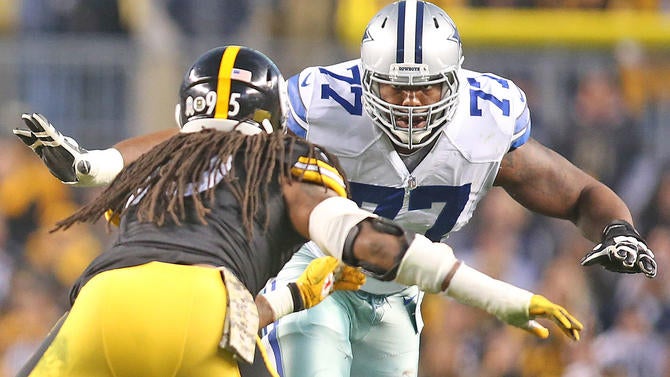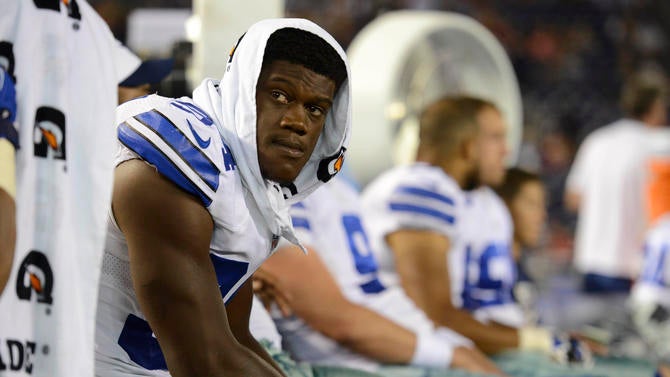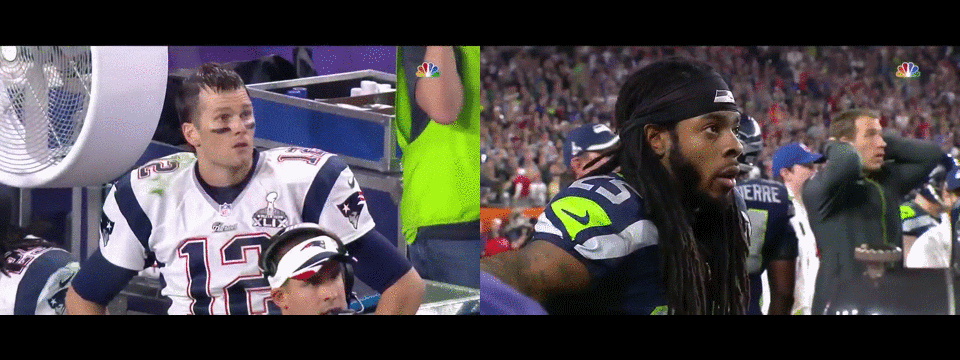Bmurph
F the Houston Astros
The Cowboys might not be able to get more than a mid-round draft pick for Romo because of his age and injury history, regardless of the timing. The Packers received a 2009 third-round pick from the Jets in a 2008 trade for a soon-to-be 39-year old Brett Favre, who was coming off of season in which he led Green Bay to the NFC Championship Game and was named an All-Pro.
Romo's preference would be for Dallas to release him so he can choose his next destination. A personal appeal to Cowboys owner Jerry Jones, with whom Romo has a special relationship, is the best chance of him getting his wish.
The Cowboys will have a $19.6 million salary cap charge for Romo if he is released or traded prior to June 2. That charge relates to the bonus proration in his 2013 extension and subsequent contract restructurings for cap purposes in 2014 and 2015. This cap charge for a player no longer on a team's roster is commonly referred to as dead money. $5.1 million of cap room would be gained immediately. Romo's cap numbers for 2018 and 2019 -- $25.2 million and $23.7 million -- would be wiped away once the roster move was made.
The cap hit would be taken over 2017 and 2018 with either one of these transactions occurring after June 1 or releasing Romo with a post-June 1 designation. NFL teams can release two players each year prior to June 1 that will be treated under the cap as if they were released after June 1. With a post-June 1 designation, a team is required to carry the player's full cap number until June 2 even though he is no longer is on the roster. The player's salary comes off the books at that time unless it is guaranteed. Dallas would have $10.7 million in dead money for 2017, which would free $14 million in cap space. Romo would remain on the Cowboys' books in 2018 with an $8.9 million cap charge.
Navigating the salary cap
The Cowboys have the most 2017 salary cap commitments in the NFL at almost $180 million using offseason accounting rules where only the top 51 cap numbers matter. That factors in cornerback Brandon Carr's contract voiding 23 days before the start of the 2017 league year on February 14. There's only $2.4 million of unused cap space carrying over from the 2016 league year.
The NFL's preliminary projections put the 2017 salary cap between $166 million and $170 million. Assuming the salary cap is set at $168 million, the Cowboys have approximately a $12.2 million overage once tenders for restricted free agents and exclusive rights players with expiring contracts, as well as the proven performance escalators for eligible 2014 draft picks, are taken into consideration. Carrying Romo next season at his $24.7 million salary wouldn't be prudent because cap space may be at a premium.
Dallas can eliminate the overage before it's required when the new league year begins on March 9 by engaging in an annual restructuring of contracts to free cap space, which pushes cap obligations into the future. The most likely candidates to restructure are tackle Tyron Smith, center Travis Frederick and star receiver Dez Bryant. Smith has a league high $15.8 million 2017 cap number for offensive tackles, while Frederick's $14.871 million 2017 cap hit leads centers by a good margin. Bryant's $17 million 2017 cap charge also is tops among wide receivers.

Tyron Smith is a candidate for a contract restructuring to clear salary cap space. USATSI
Smith has restructured his contract in each of the past two years. The Cowboys can create $7.38 million of cap room by converting the maximum $9.225 million of Smith's $10 million base salary into signing bonus. Frederick's six-year, $54.6 million preseason extension, which made him the NFL's highest-paid center, was designed with a restructure in mind because his fully guaranteed 2017 base salary is $14.221 million. Turning all but $775,000 of Frederick's base salary, his league minimum, into signing bonus will free up approximately $10.75 million of cap space.
Romo's preference would be for Dallas to release him so he can choose his next destination. A personal appeal to Cowboys owner Jerry Jones, with whom Romo has a special relationship, is the best chance of him getting his wish.
The Cowboys will have a $19.6 million salary cap charge for Romo if he is released or traded prior to June 2. That charge relates to the bonus proration in his 2013 extension and subsequent contract restructurings for cap purposes in 2014 and 2015. This cap charge for a player no longer on a team's roster is commonly referred to as dead money. $5.1 million of cap room would be gained immediately. Romo's cap numbers for 2018 and 2019 -- $25.2 million and $23.7 million -- would be wiped away once the roster move was made.
The cap hit would be taken over 2017 and 2018 with either one of these transactions occurring after June 1 or releasing Romo with a post-June 1 designation. NFL teams can release two players each year prior to June 1 that will be treated under the cap as if they were released after June 1. With a post-June 1 designation, a team is required to carry the player's full cap number until June 2 even though he is no longer is on the roster. The player's salary comes off the books at that time unless it is guaranteed. Dallas would have $10.7 million in dead money for 2017, which would free $14 million in cap space. Romo would remain on the Cowboys' books in 2018 with an $8.9 million cap charge.
Navigating the salary cap
The Cowboys have the most 2017 salary cap commitments in the NFL at almost $180 million using offseason accounting rules where only the top 51 cap numbers matter. That factors in cornerback Brandon Carr's contract voiding 23 days before the start of the 2017 league year on February 14. There's only $2.4 million of unused cap space carrying over from the 2016 league year.
The NFL's preliminary projections put the 2017 salary cap between $166 million and $170 million. Assuming the salary cap is set at $168 million, the Cowboys have approximately a $12.2 million overage once tenders for restricted free agents and exclusive rights players with expiring contracts, as well as the proven performance escalators for eligible 2014 draft picks, are taken into consideration. Carrying Romo next season at his $24.7 million salary wouldn't be prudent because cap space may be at a premium.
Dallas can eliminate the overage before it's required when the new league year begins on March 9 by engaging in an annual restructuring of contracts to free cap space, which pushes cap obligations into the future. The most likely candidates to restructure are tackle Tyron Smith, center Travis Frederick and star receiver Dez Bryant. Smith has a league high $15.8 million 2017 cap number for offensive tackles, while Frederick's $14.871 million 2017 cap hit leads centers by a good margin. Bryant's $17 million 2017 cap charge also is tops among wide receivers.

Tyron Smith is a candidate for a contract restructuring to clear salary cap space. USATSI
Smith has restructured his contract in each of the past two years. The Cowboys can create $7.38 million of cap room by converting the maximum $9.225 million of Smith's $10 million base salary into signing bonus. Frederick's six-year, $54.6 million preseason extension, which made him the NFL's highest-paid center, was designed with a restructure in mind because his fully guaranteed 2017 base salary is $14.221 million. Turning all but $775,000 of Frederick's base salary, his league minimum, into signing bonus will free up approximately $10.75 million of cap space.



























